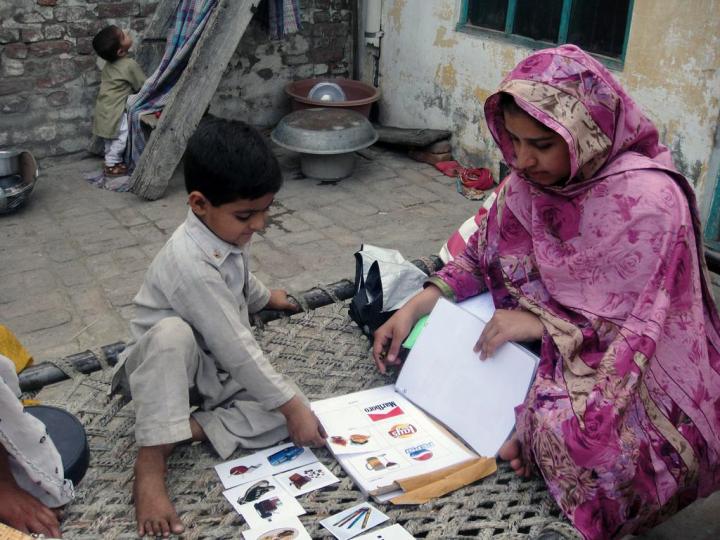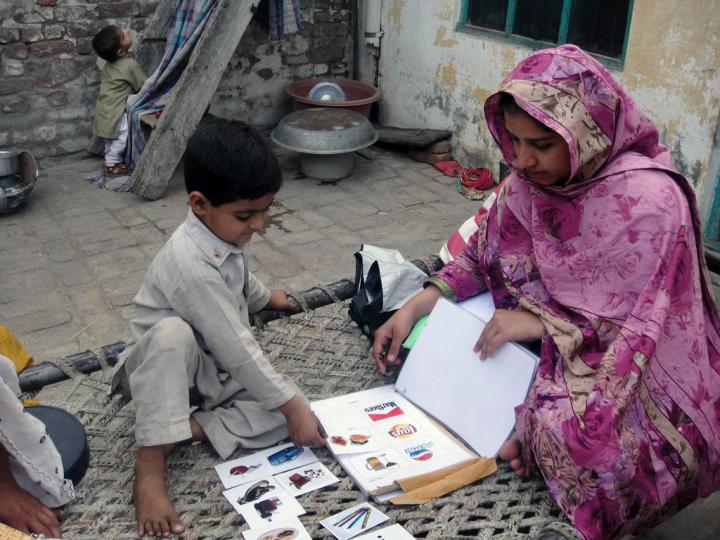
Credit: Dina Borzekowski
Young children in six low- and middle-income countries prefer junk food and sugar sweetened beverages over traditional and home cooked meals, according to a new study from the University of Maryland School of Public Health.
Researchers investigated the links between marketing and media exposure and the preference for international foods and beverages in Brazil, China, India, Nigeria, Pakistan, and Russia. The kids who easily identified the logos of international food and beverage brands, such as McDonald's, KFC and Coca-Cola, were more likely to request and prefer the processed foods of low nutrition marketed by these international corporations. This research is published in the Journal of Children and Media.
"Our findings draw attention to the insidious and pervasive nature of marketing and how it impacts children's health," said Dina Borzekowski, Ed.D., research associate professor in the UMD Department of Behavioral and Community Health and principal investigator of the study. "Why would a five year old say that they want a Coca Cola over a lassi? Kentucky Fried Chicken over a stir-fried chicken and vegetable dish made by mom?"
While the associations between exposure to advertisements and kids' preferences for fast food and higher rates of overweight and obesity have been well documented in the United States and other developed countries, there is less information about the association between media exposure and child health in low and middle income countries.
Childhood obesity continues to be a significant public health concern globally, even occurring simultaneously with food insecurity in many countries. It is predicted that more than a quarter of Chinese children will be obese by 2030. Understanding the reach of global and international marketing and its impact on food preferences could help inform public health approaches to reverse this troubling trend.
For this study, Dr. Borzekowski and colleagues gathered information from 2422 children between age 5 and 6 years from Brazil, China, India, Nigeria, Pakistan and Russia. The research included recognition where boys and girls were shown pictures of media characters (both internationally and locally popular ones) and asked to identify them. The researchers found that three-fourths could name Tom and Jerry and two-thirds could name Mickey Mouse.
They also did a matching activity, where children were shown cards with different logos and asked to match each card with the item it might represent. Overall, about 60 percent were able to associate the Coca Cola swirl with an image of a soda glass. Over 91% of the Brazilian children could. Around 72% of the Russian children could match up a picture of the McDonald's arches with a picture of a hamburger and fries.
To assess food preferences, the research team showed children two similar products – one international and one domestic – and asked which product they would want. They also had children rate (with 0 to 4 smiley faces) how much they desired a variety of domestic and international products.
Character and logo recognition in young children was consistently and significantly related to the selection of international over domestic and local food and beverage options. The influence of logo recognition was even stronger than that of media exposure, the study found.
This work provides evidence that global and international marketing will reach very young children not only through broadcast media via commercials and product placement, but also through many other diverse platforms such as billboards, packaging, branded pajamas and backpacks. These messages directly and indirectly impact children's food and beverage preferences.
"The young child's environment is full of persuasive messages, even in communities that lack other resources and benefits," Dr. Borzekowski explained. "We should be concerned about how this information environment influences boys and girls' diets and food choices. Such public health research suggests we need to regulate food and beverage marketing reaching young and vulnerable children."
###
Media Contact
Kelly Blake
[email protected]
301-405-9418
@UMDRightNow
http://www.umdrightnow.umd.edu/
Original Source
http://sph.umd.edu/news-item/logo-recognition-associated-kids-choice-international-junk-foods-six-developing-countries





